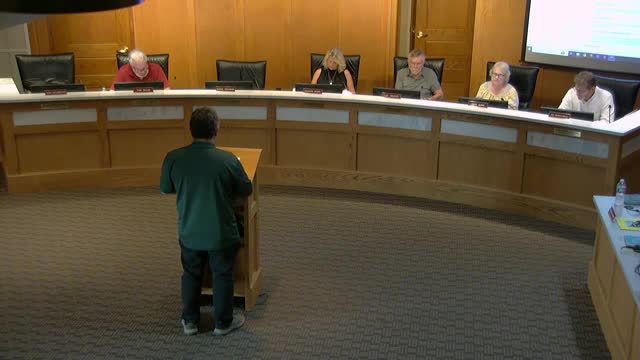Controversy Erupts Over Historic Window Replacement Proposal
September 11, 2024 | Manistee, Manistee County, Michigan
This article was created by AI summarizing key points discussed. AI makes mistakes, so for full details and context, please refer to the video of the full meeting. Please report any errors so we can fix them. Report an error »

In a recent government meeting, discussions centered around the proposed replacement of two windows in a historic building, with significant concerns raised regarding the materials and methods suggested by the property owner. The recommendation from the historical commission was to allow the replacement of the windows, which have deteriorated beyond repair. The inspector noted that while the original frames could remain intact, the installation of vinyl replacement windows was contentious.
The owner’s request included the use of vinyl windows, which raised eyebrows among commission members due to the material's longevity issues. Concerns were voiced about the potential for warping and water damage over time, with some members advocating for wooden windows as a more durable alternative. The cost of wooden windows was highlighted as a barrier, with estimates suggesting they could be three times more expensive than vinyl options.
The discussion also revealed that the windows in question are located at the back of the building, an area with limited visibility, which some argued could mitigate the aesthetic impact of vinyl. However, the historical integrity of the building was a primary concern, with members expressing a desire to maintain the original character of the structure.
Ultimately, the commission decided to table the decision until further discussions could be held with the owner to clarify the specifics of the project, including whether the windows would be new or used, and to explore alternative materials such as aluminum. The urgency of the situation was underscored by the fact that one of the windows serves as an emergency egress, necessitating prompt action to ensure safety.
The owner’s request included the use of vinyl windows, which raised eyebrows among commission members due to the material's longevity issues. Concerns were voiced about the potential for warping and water damage over time, with some members advocating for wooden windows as a more durable alternative. The cost of wooden windows was highlighted as a barrier, with estimates suggesting they could be three times more expensive than vinyl options.
The discussion also revealed that the windows in question are located at the back of the building, an area with limited visibility, which some argued could mitigate the aesthetic impact of vinyl. However, the historical integrity of the building was a primary concern, with members expressing a desire to maintain the original character of the structure.
Ultimately, the commission decided to table the decision until further discussions could be held with the owner to clarify the specifics of the project, including whether the windows would be new or used, and to explore alternative materials such as aluminum. The urgency of the situation was underscored by the fact that one of the windows serves as an emergency egress, necessitating prompt action to ensure safety.
View full meeting
This article is based on a recent meeting—watch the full video and explore the complete transcript for deeper insights into the discussion.
View full meeting
